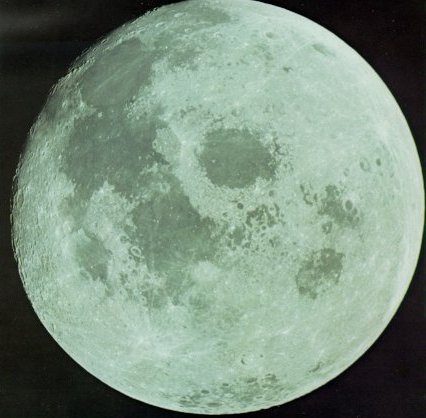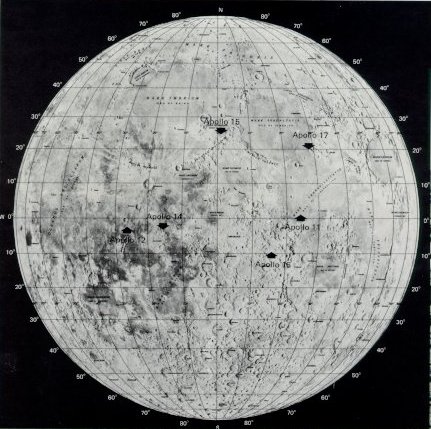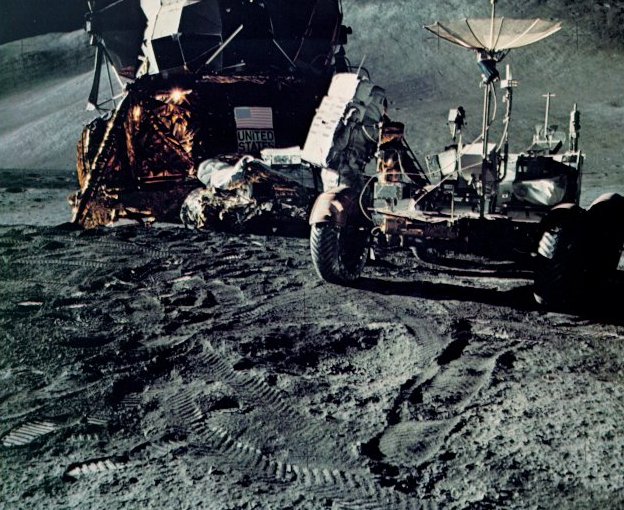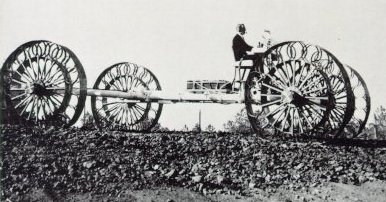|
Landing sites for the great voyages of exploration,
Apollos 15, 16, and 17, were chosen primarily to
expand knowledge of light-colored highland areas,
and the ancient crust of the Moon that is 4.5 billion
years old. Choices of Hadley-Appennines for 15,
Descartes for 16, and Taurus-Littrow for 17 were
compromises between this goal and constraints imposed
by availability of high-quality imagery for planning,
ideal distribution of geophysical instruments, landing
safety considerations, and propulsive energy of the
Apollo/Saturn system. Note that later missions were not
targeted so closely to the equator. Full-Moon photo here,
taken from space, is not precisely congruent with the
projection used in the chart.
|






















